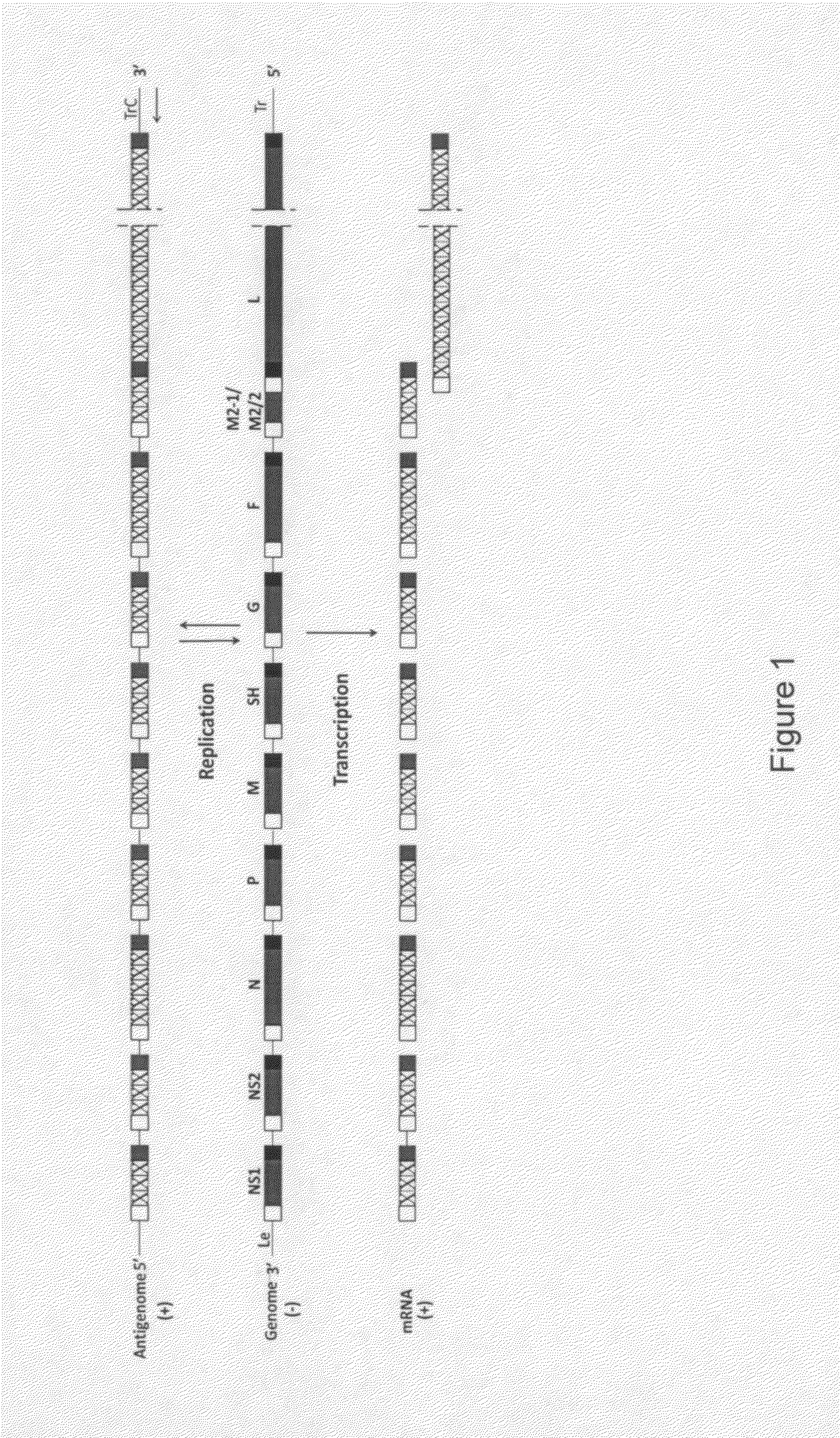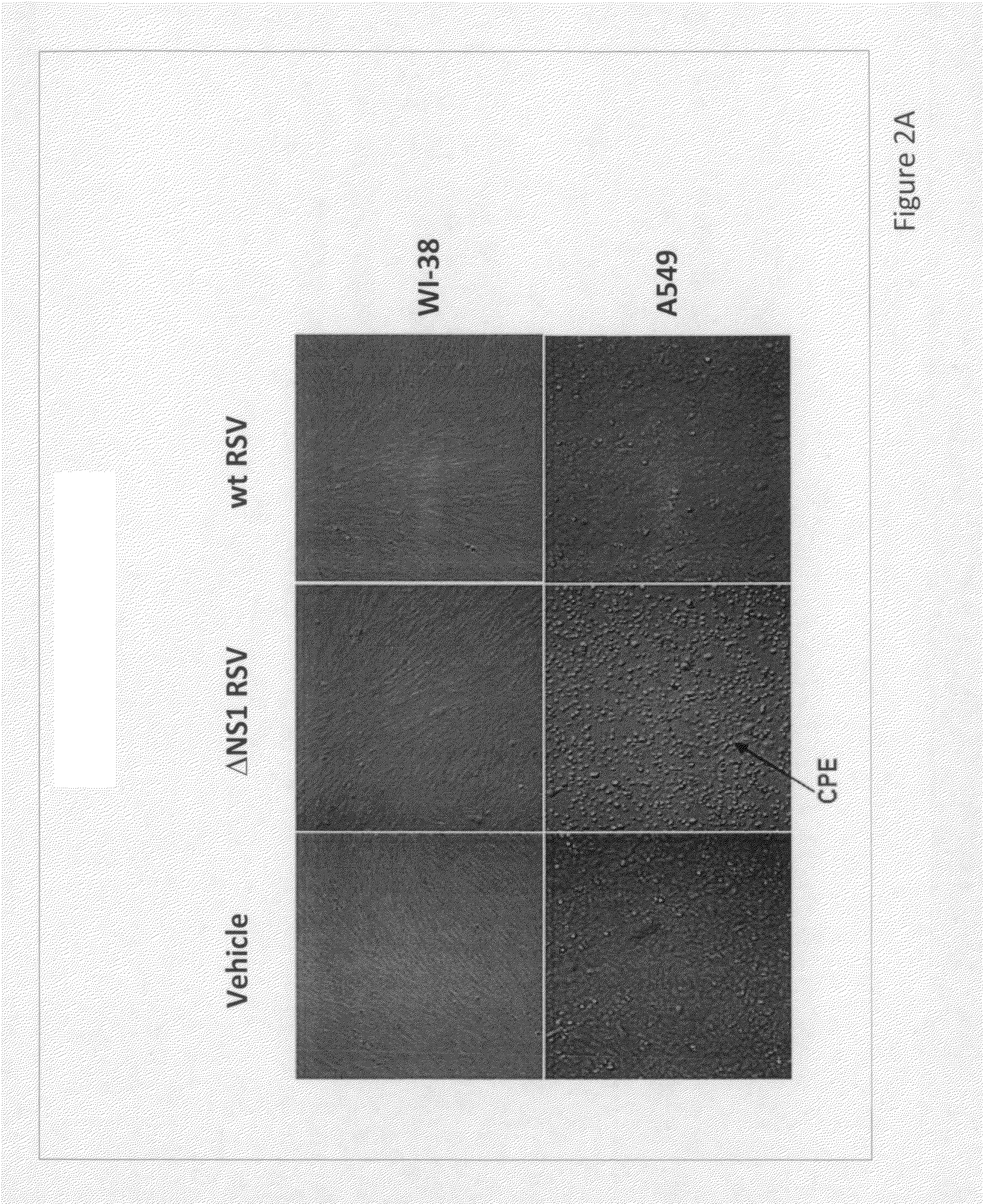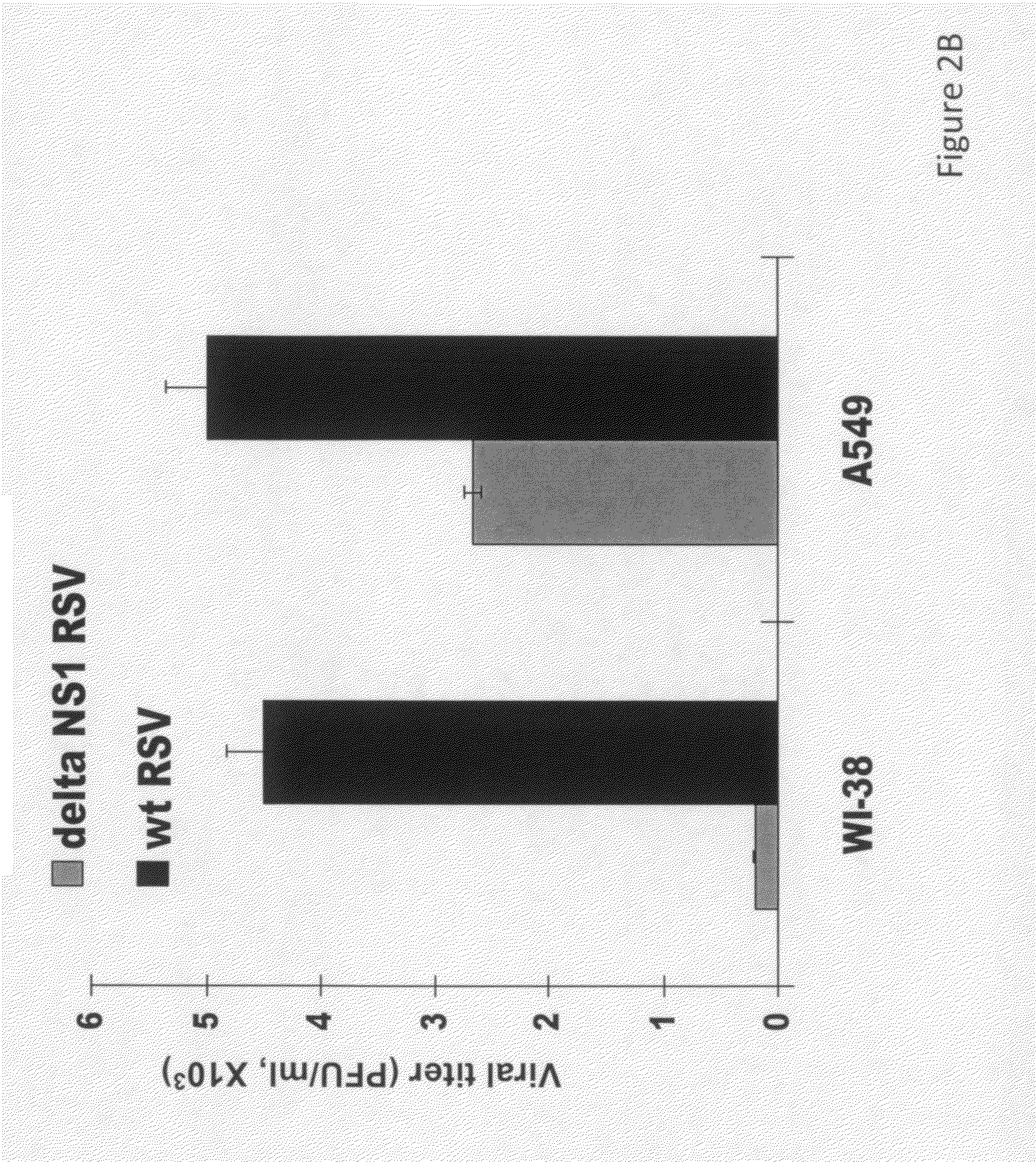Lung cancer therapy using an engineered respiratory syncytial virus
- Summary
- Abstract
- Description
- Claims
- Application Information
AI Technical Summary
Benefits of technology
Problems solved by technology
Method used
Image
Examples
Embodiment Construction
[0022]The respiratory syncytial virus (RSV) was used in this study. The NS1 gene was deleted by the removal of 122 to 630 nt in the antigenomic cDNA using reverse genetics approach, resulting in the joining of the upstream nontranslated region of NS1 to the translational initiation codon of NS2. The ΔNS1 RSV was recovered through co-transfecting Vero cells with the NS1-deficient viral cDNA clone and expressional plasmids encoding N, P, M2-1 and L. Alternatively, the engineered virus could be any other viruses with the deletion of similar NS1 gene.
[0023]ΔNS1 RSV preferentially kills NSCLC cells both in vitro and in vivo. NSCLC cells and WI-38 normal human diploid lung cells were infected with wt or ΔNS1 RSV (MOI=5). Changes in cell morphology were observed and viral replication was measured. FIG. 2A shows that ΔNS1 RSV selectively induces CPE in A549 cells, and that ΔNS1 RSV has a higher viral titer in A549 cells than in WI-38 cells 24 hr after infection (FIG. 2B), suggesting that A5...
PUM
 Login to View More
Login to View More Abstract
Description
Claims
Application Information
 Login to View More
Login to View More - R&D
- Intellectual Property
- Life Sciences
- Materials
- Tech Scout
- Unparalleled Data Quality
- Higher Quality Content
- 60% Fewer Hallucinations
Browse by: Latest US Patents, China's latest patents, Technical Efficacy Thesaurus, Application Domain, Technology Topic, Popular Technical Reports.
© 2025 PatSnap. All rights reserved.Legal|Privacy policy|Modern Slavery Act Transparency Statement|Sitemap|About US| Contact US: help@patsnap.com



